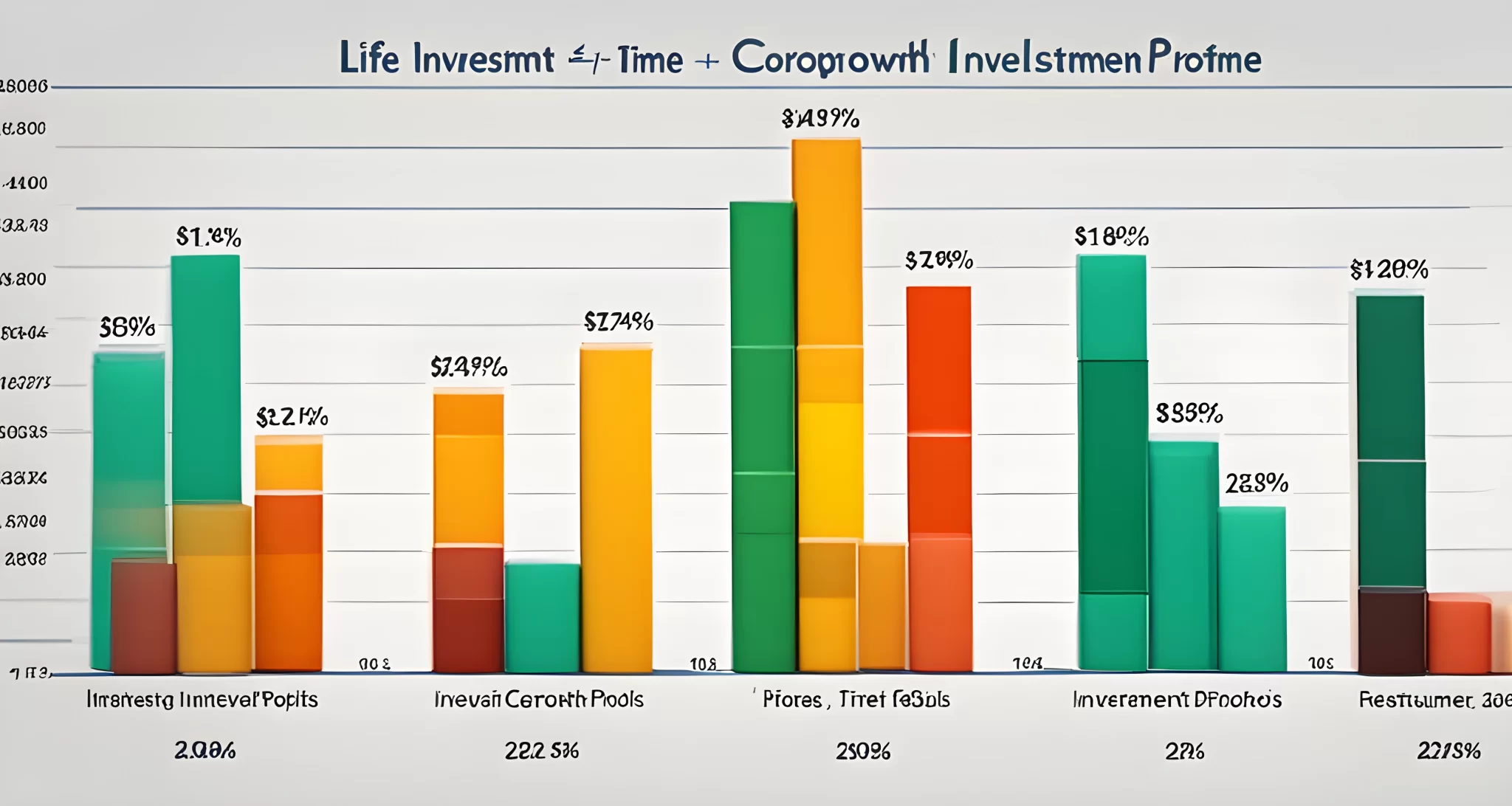Understanding the Investment
Before making any investment, it is crucial to fully understand the business model and fundamentals of the investment. This includes researching the company’s financials, management team, and competitive positioning. Following the advice of Warren Buffett, it is wise to avoid investing in companies you don’t understand.
Importance of Research
Conducting thorough research on potential investments is key to making informed decisions. This involves analyzing the company’s financial statements, such as balance sheets, income statements, and cash flow statements. Understanding these financials can give insight into the company’s profitability, debt levels, and overall financial health.
Management Team
The management team plays a crucial role in the success of a company. Researching the backgrounds and track records of key executives can provide valuable insight into their abilities to lead the company and make strategic decisions. It is important to assess whether the management team has a proven track record of success and whether their interests are aligned with those of shareholders.
Competitive Positioning
Understanding how a company stands within its industry and its competitive landscape is essential for making informed investment decisions. Analyzing factors such as market share, barriers to entry, and competitive advantages can help investors gauge a company’s ability to maintain its position and sustain growth over the long term.
It’s also important to consider how the company is positioned within its industry in relation to technological advancements, regulatory changes, and evolving consumer preferences.
In conclusion, taking the time to thoroughly understand an investment before making any commitments is crucial for long-term success. By conducting comprehensive research on a company’s financials, management team, and competitive positioning, investors can make informed decisions that align with their investment goals.
Remember to check out our article on Enhance Investment Portfolio for more tips on maximizing your investment returns!

Diversifying Your Portfolio
One of the key principles of investment is to avoid putting all your eggs in one basket. Diversification involves spreading your investments across different asset classes, such as stocks, bonds, and real estate, as well as different sectors of the economy. This helps to reduce the overall risk of your portfolio by not being overly exposed to any single investment.
Benefits of Diversification
Diversifying your portfolio can help mitigate the impact of market volatility on your investments. By spreading your money across different assets, you can potentially reduce the overall risk in your portfolio. For example, if one sector of the economy experiences a downturn, other sectors may continue to perform well, helping to balance out any potential losses.
How to Diversify
In order to effectively diversify your portfolio, it’s important to consider a variety of factors such as risk tolerance, investment goals, and time horizon. You can achieve diversification through a mix of asset classes, geographic regions, and industry sectors. For example, investing in both domestic and international stocks and bonds can provide geographical diversification. Additionally, including different industry sectors such as technology, healthcare, and consumer staples can further diversify your portfolio.
Importance of Rebalancing
It’s important to regularly review and rebalance your investments to ensure that they remain diversified according to your investment goals. As the market changes, certain assets may perform better than others, causing your portfolio to become unbalanced. Regularly rebalancing ensures that you maintain the desired level of diversification and reduces the risk of being overly exposed to any single investment.
By diversifying your portfolio, you can potentially reduce the overall risk while aiming for consistent returns over the long term. By spreading your investments across different asset classes and sectors of the economy, you can help safeguard your portfolio against market downturns and optimize its performance.
For more information on the impact of inflation on investment returns, check out Analyzing Inflation returns.

Setting Investment Goals
When it comes to investing, one of the most important steps you can take is setting clear and realistic investment goals. This will not only help you stay focused, but also tailor your investment strategy to meet your specific financial needs and risk tolerance.
Short-term, Medium-term, and Long-term Objectives
It’s important to identify your short-term, medium-term, and long-term objectives for your investments. Short-term goals may include saving for a vacation or a down payment on a house, while medium-term goals could be funding a child’s education or buying a car. Long-term objectives often revolve around retirement planning and building wealth for the future.
Tailoring Your Investment Strategy
By having a clear set of goals, you can tailor your investment strategy accordingly. For example, if you have short-term goals, you may want to focus on more stable and liquid investments, whereas long-term goals may allow for more aggressive investment strategies.
Financial Needs and Risk Tolerance
Understanding your financial needs and risk tolerance is crucial when setting investment goals. If you need access to funds in the near future, you may want to prioritize investments that are less volatile. On the other hand, if you have a higher risk tolerance and a longer time horizon, you may be more inclined to invest in higher-risk assets with the potential for greater returns.
By setting clear investment goals, you can avoid making emotional decisions based on short-term market fluctuations or external factors. Instead, you can stay focused on achieving your specific financial objectives.
For more information on how to maximize your return on investment as a beginner, check out this insightful article on Investment advice for beginners.
In conclusion, having well-defined investment goals will provide you with a roadmap for your investment journey and help you make informed decisions that align with your overall financial objectives.

Avoiding Emotional Decisions
When it comes to making investment decisions, it’s crucial to avoid being swayed by emotions such as fear and greed. Emotions can often lead to irrational choices that may negatively impact your investment portfolio. Instead, it is essential to stay calm and rational when making investment decisions. This means not being influenced by short-term market movements or the herd mentality of other investors.
One way to avoid emotional decisions is by maintaining a disciplined approach to investing. This involves creating a well-thought-out investment plan and sticking to it, regardless of the market fluctuations. By having a clear investment strategy in place, you can avoid making impulsive decisions based on emotions.
It’s also important to have a long-term approach to investing. This means not getting caught up in the day-to-day movements of the market and instead focusing on the bigger picture. By keeping a long-term perspective, you can avoid being swayed by short-term market fluctuations and make more informed decisions for the future.
Additionally, diversifying your portfolio can help mitigate emotional decisions. By spreading your investments across different asset classes, you can reduce the impact of market volatility on your overall portfolio. This can help you avoid making knee-jerk reactions based on the performance of a single investment.
Overall, avoiding emotional decisions in investing requires patience and discipline. It’s important to stay focused on your long-term investment goals and not be swayed by short-term emotions. By following a well-thought-out investment plan and maintaining a calm and rational approach, you can avoid making emotional decisions that may negatively impact your investment portfolio.
For more information on maximizing investment returns and avoiding common investment mistakes, check out the Maximize investment earnings guide.

Patience and Long-Term Approach
Successful investing requires patience and a long-term perspective. It is important to avoid the temptation to chase short-term gains or react impulsively to market fluctuations. Instead, focus on a consistent investment strategy that aligns with your long-term financial goals, and remain patient as you give your investments time to grow and perform.
One key aspect of a long-term approach is the power of compounding returns. By patiently allowing your investments to grow over time, you can take advantage of the snowball effect of compounding returns. This means that your initial investment gains interest, and then that interest also gains interest, leading to exponential growth over time. By maintaining a long-term perspective, you can harness the power of compounding to significantly grow your wealth Addressing returns issue.
Another important reason for maintaining a long-term approach is the ability to ride out market downturns. History has shown that markets have always recovered from downturns and continued their upward trajectory. By staying patient during market fluctuations and not succumbing to panic selling, investors can avoid locking in losses and potentially miss out on future recovery and growth.
In addition, maintaining a patient and long-term approach allows investors to stay focused on their overall investment goals. By avoiding short-term distractions, investors can stay committed to their financial objectives and make decisions that align with their long-term vision.
It’s important to remember that successful investing is not about timing the market or chasing quick profits; it’s about staying disciplined, patient, and focused on the long-term journey. By maintaining this mindset, investors can position themselves for success and build a strong financial future.
FAQ
What is the importance of diversifying my investment portfolio?
Diversifying your portfolio helps reduce risk by spreading your investments across different asset classes and sectors. this can help minimize the impact of a decline in any one investment.
Why is it important to understand the investment before committing?
Understanding the business model and fundamentals of an investment is crucial for making informed decisions. it helps you assess the potential risks and rewards of the investment.
How can i avoid making emotional investment decisions?
Fear and greed can cloud judgment, leading to irrational decisions. it’s important to stay calm and rational when making investment decisions, focusing on your long-term goals.
Why should i avoid high turnover in my investments?
High turnover can lead to increased transaction costs and missed opportunities. it’s better to stick to a consistent investment strategy and avoid excessive trading.
